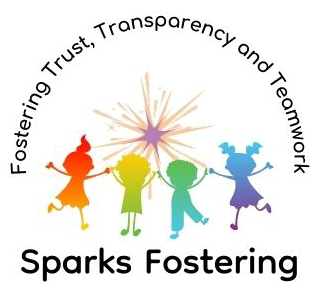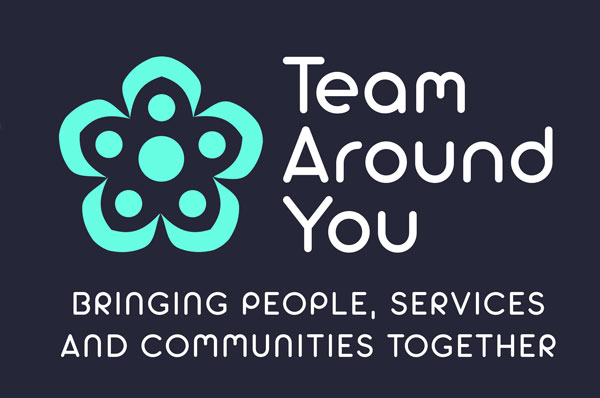Self-Harm
What is self-harm?
Self-harm is when someone hurts themselves on purpose to relieve feelings of distress. People sometimes self-harm when life feels hard to cope with.
When someone self-harms, they may be dealing with lots of intense thoughts and feelings; hurting themselves may feel like the only way to let those feelings out. Or they may feel numb and want to hurt themselves so that they can feel something.
The NHS and ‘Young Minds‘ websites provide useful information about self-harm. The information relevant to fostering is included here.

Types of self-harm
Self-harm is not always obvious. Sometimes people find themselves doing things which are harmful, but do not think of them as ‘self-harm’. This could include things like:
- Using drugs or alcohol to cope with problems.
- Not eating, over-eating, or forcing vomiting.
- Spending all their time on addictive behaviours like gaming, social media or gambling.
- Over-exercising and/or exercising when injured.
- Getting into fights.
- Getting into situations on purpose where they risk getting hurt, including risky sexual behaviour.
Why people self-harm
Some of the reasons that people may self-harm include:
- Expressing or coping with emotional distress.
- Trying to feel in control.
- A way of punishing themselves.
- Relieving unbearable tension.
- A cry for help.
- A response to intrusive thoughts.
Self-harm may be linked to bad experiences that are happening now, or in the past. But sometimes the reason is unknown. The reasons can also change over time and will not be the same for everybody.
Common causes of emotional distress
Self-harm is most often described as a way to express or cope with emotional distress. There are many possible causes of emotional distress; it’s often a build-up of many smaller things.
Some examples include:
- Being bullied.
- Pressure at school or work.
- Family arguments or relationship problems.
- Money worries.
- Low self-esteem.
- Struggling with stress, anxiety or depression.
- Confusion about sexuality.
- Grief after bereavement or loss.
- Physical or sexual abuse.
- Being in contact with the criminal justice system.
- Experiencing complex mental health difficulties that sometimes cause impulsive behaviour or difficulty controlling emotions, often due to past trauma.
Impact of self-harm
Self-harm may be a way to show the feelings inside on the outside. Self-harm may cause:
- Pain or discomfort.
- Temporary physical marks.
- Scarring.
- Feelings of sickness or dizziness.
- Feelings of weakness, shame or disgust.
- Feeling scared, out of control or confused about why they are doing this.
- Feelings of isolation and loneliness.
Often self-harm only brings temporary relief. This means that later, when things start to build up again, they might feel like they have to harm again. It can be really hard to break out of this cycle. And it can be upsetting to think that this is the only way to cope. But there are things that can be done to stop self-harming and get better.
How to recognise self-harm
It can be hard to recognise when someone has started to self-harm as they may not want anyone else to know.
Physical signs of self-harm:
- Keeping themselves fully covered at all times, even in hot weather.
- Unexplained cuts, bruises or cigarette burns, usually on the wrists, arms, thighs and chest.
- Unexplained blood stains on clothing or tissues.
- Signs that they have been pulling out their hair.
Emotional signs of self-harm
- Becoming very withdrawn and not speaking to others.
- Signs of depression, such as low mood, tearfulness or a lack of motivation or interest in anything.
- Signs of low self-esteem, such as thinking they’re not good enough.
- Talking about ending things or not wanting to go on.
Providing advice and support
There are some things you can try that may help someone feel more supported and able to get help.
Do
- Encourage them to speak to a GP or free listening service about self-harm.
- Ask how they would like to be supported.
- Let them know you’re there for them.
- Tell them about their positive qualities.
- Try to understand their emotions and experiences, without judging them, rather than focusing on their self-harm.
- Consider that any amount of self-harm might be a sign that they’re feeling extremely distressed.
- Let them be in control of their decisions, but get them medical attention if needed.
Don’t
- Do not try to force them to change what they’re doing.
- Do not threaten to take away their control.
- Do not insult them, for example by saying they’re attention-seeking.
Supporting children to talk about self-harm
It can be difficult for people to talk to friends, family or a health professional about self-harm. But many people feel more supported and less alone after talking to someone.
Foster carers can suggest the following tips to children who self-harm to talk to someone about it:
- Find someone you can trust – the foster carer, social worker, teacher, independent visitor, health or other professionals, or a close friend (foster carers can advise the child about who an appropriate friend might be).

- Decide on the right time or place to talk to someone – it may feel easier to write something down, talk online or call and practice what you want to say first.
- Let the person know that what you’re sharing may be a shock to them, but you’re looking for help – ask to continue the conversation another time if the other person feels distressed or you’re interrupted.
- Try to talk honestly and openly – be clear about how you’re feeling, why you’re asking for help and things they may be able to do.
- Let the other person ask questions – but do not feel you have to answer them all right now.
- Decide if you want to show the other person any injuries or scars – if you’re talking to a health professional they may want to check if you need treatment.
Ways to help avoid self-harm
When speaking with children who self-harm, foster carers may wish to make the following suggestions to the children:
- Try working out if feeling a certain way leads to your self-harm – for example, when you’re feeling sad or anxious you could try expressing that emotion in a safer way.
- Write down your feelings – no one else needs to see it. Take a few minutes every day to write down how you are feeling. This can be a helpful way to let out your emotions. It can also help you to recognise what is bothering you and any patterns in what triggers you or causes you to feel bad. If you don’t like writing, try doodling or drawing. Remember this is just a way to express yourself, there’s no right or wrong way to do this. If you want to, you could show your journal to your foster carer, social worker, or any professionals who are supporting you, to help them understand what you are going through.
- Read about mental health and well-being – including help for common feelings such as stress, anxiety and depression.
- Consider how your use of social media is affecting your mood. Only follow accounts that make you feel positive and safe.
- Make sure you get enough sleep and stay hydrated – this can reduce your stress levels.
- Take time out when you need to.
- Think of three things you are grateful for each day.
- Be as kind to yourself as you would be to your best friend – think about the advice and support you would give someone else if you heard they were struggling.
- It may help to make a safety plan. The safety plan may include: Emergency activities to avoid self-harming; longer-term actions; who can help you; who will help you in an emergency; who will help you regularly over the long term; what helps you to relax; things that distract you; how to manage underlying triggers.
Distraction exercises
The following distraction activities could be recommended for children to use as a distraction, or to improve low mood:
- Go for a walk or do some gentle exercise.
- Focus on your breathing.
- Text a friend and let them know you need them to help you take your mind off things.
- Play music and sing or dance along.
- Hold an ice cube.
- Write down your thoughts.
- Hit a cushion or pillow.
- Tear up a magazine or newspaper.
- Make a self-soothe box (a box of items that help you feel calm and grounded).
- Speak to your foster carer, social worker, teacher or other professional who is available at the time.
Where to get help for self-harm
The child’s social worker will take the lead in planning how children can be supported with any issues of low mood or self-harm. The social worker may suggest that the child is given access to a counsellor/therapist, independent advocate, independent visitor, or speaks to Samaritans, Mind, ‘Shout’, Childline, Health for Teens, ‘Self Injury Support’ (webchat for women and girls), or CALM (webchat for men).
An appointment would be made with a GP if the child is harming themselves, having thoughts about harming themselves, or worried about minor injuries that may become infected without treatment. The GP may be able to refer to self-help or support groups. They can also give advice and treatment for minor injuries. A GP may also offer an assessment with a local community mental health team (CMHT), who may give general advice or may offer a psychological talking therapy, or (if required) medication.
Foster carers should also be mindful of their own emotional and mental health while supporting someone who self-harms; this can be emotionally draining for the foster carer and the team around the child. Foster carers should speak with their supervising social worker, their backup carer and they should make good use of their support network. Foster carers should also consider self-care and utilising their own coping strategies.
additional resources (optional)
Common elements in treatments for youth suicide attempts and self-harm. A podcast by the Association for Child and Adolescent Mental Health.
What can I do if my child is self-harming? Advice from Action for Children







